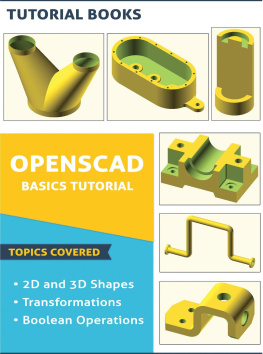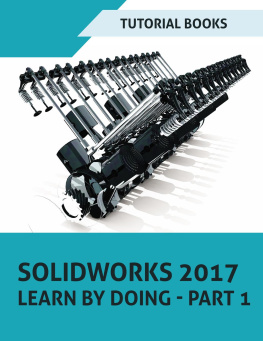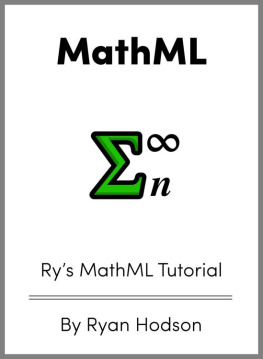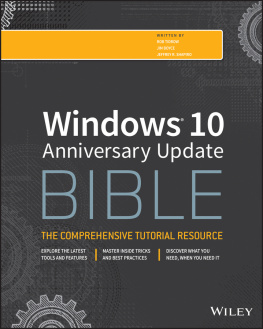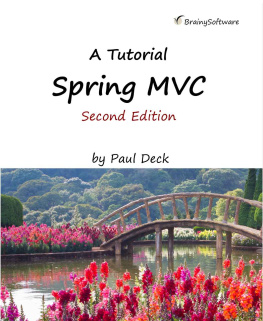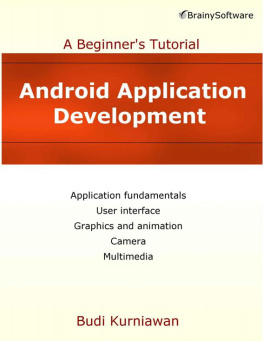First of all, this isn't a sequal to the original, it's a replacement. As such, there isn't really a whole lot of new stuff if you already know everything in the first one, sorry :(
So what's changed? Obviously the format is different, I've split it up into multiple sections to make it easier to view peice by peice, some people liked the one page style, some people didn't, but this way makes it a bit easier to maintain I think.
It also looks better :) I've put slightly more thought into the way it looks, still not fancy or anything, but it's better than before.
One important improvement is the fact that all the code works without changes in VC++, which should cut down on confusion a lot. The last one was written while I was using Borland C++ (not C++ Builder) and so certain minor details needed changing to work under VC++, mostly type casts. To an experianced programmer this is trivial and wouldn't present a problem, but if you're new to this (and pretty much anyone reading this is) then it can be a confusing setback, and you might accuse me of making a mistake, which I assure you never happens :D
I've also provided VC++ project files for the examples so you don't need to fumble through making your own to compile them.
As well as being VC++ friendly, I will be testing all of the examples with the Borland C++ command line tools (the free ones, see Appendix) to make sure they compile without errors, and I will provide makefiles for those of you using this compiler. If you use something like LCC-Win32 or cygwin, you're on your own, but all of the code does work, you might just need to tweak things for compatibility. Anyone who uses these compilers, feel free to send me updated files if you needed to change anything to get it to work and I will post it for others.
What this tutorial is all about
This tutorial is intended to present to you the basics (and common extras) of writing programs using the Win32 API. The language used is C, most C++ compilers will compile it as well. As a matter of fact, most of the information is applicable to any language that can access the API, inlcuding Java, Assembly and Visual Basic. I will not however present any code relating to these languages and you're on your own in that regard, but several people have previously used this document in said languages with quite a bit of success.
This tutorial will not teach you the C language, nor will it tell you how to run your perticular compiler (Borland C++, Visual C++, LCC-Win32, etc) I will however take a few moments in the appendix to provide some notes on using the compilers I have knowledge of.
If you don't know what a macro or a typedef are, or how a switch() statement works, then turn back now and read a good book or tutorial on the C language first. Important notes
Sometimes throughout the text I will indicate certain things are IMPORANT to read. Because they screw up so many people, if you don't read it, you'll likely get caught too. The first one is this:
The source provided in the example ZIP file is not optional! I don't include all the code in the text itself, only that which is relevant to whatever I'm currently discussing. In order to see how this code fits in with the rest of the program, you must take a look at the source provided in the ZIP file.
And here's the second one:
Read the whole thing! If you have a question during one section of the tutorial just have a little patience and it might just be answered later on. If you just can't stand the thought of not knowing, at least skim or search (yes computers can do that) the rest of the document before asking the nice folks on IRC or by email.
Another thing to remember is that a question you might have about subject A might end up being answered in a discussion of B or C, or maybe L. So just look around a little.
Ok I think that's all the ranting I have to do for the moment, lets try some actual code.
The simplest Win32 program
If you are a complete beginner lets make sure you are capable of compiling a basic windows application. Slap the following code into your compiler and if all goes well you should get one of the lamest programs ever written.
Remember to compile this as C, not C++. It probably doesn't matter, but since all the code here is C only, it makes sense to start off on the right track. In most cases, all this requires if you add your code to a .c file instead of a .cpp file. If all of this hurts your head, just call the file test.c and be done with it.
#include
int WINAPI WinMain(HINSTANCE hInstance, HINSTANCE hPrevInstance, LPSTR lpCmdLine, int nCmdShow) {
MessageBox(NULL, "Goodbye, cruel world!", "Note", MB_OK);
return 0;
}
If that doesn't work, your first step is to read whatever errors you get and if you don't understand them, look them up in the help or whatever documents accompany your compiler. Make sure you have specified a Win32 GUI (NOT "Console") project/makefile/target, whatever applies to your compiler. Unfortunately i can't help much with this part either, as errors and how to fix them vary from compiler to compiler (and person to person).
You may get some warnings about you not using the parameters supplied to WinMain(). This is OK. Now that we've established you can in fact compile a program, lets go through that little bit of code.
int WINAPI WinMain(HINSTANCE hInstance, HINSTANCE hPrevInstance, LPSTR lpCmdLine, int nCmdShow)
WinMain() is windows equivalent of main() from DOS or UNIX. This is where your program starts execution. The parameters are as follows:
HINSTANCE hInstance
Handle to the programs executable module (the .exe file in memory)
HINSTANCE hPrevInstance
Always NULL for Win32 programs.
LPSTR lpCmdLine
The command line arguments as a single string. NOT including the program name.
int nCmdShow
An integer value which may be passed to ShowWindow(). We'll get to this later.
hInstance is used for things like loading resources and any other task which is performed on a per-module basis. A module is either the EXE or a DLL loaded into your program. For most (if not all) of this tutorial, there will only be one module to worry about, the EXE.
hPrevInstance used to be the handle to the previously run instance of your program (if any) in Win16. This no longer applies. In Win32 you ignore this parameter.
WINAPI specifies the calling convention and is defined as _stdcall. If you don't know what this means, don't worry about it as it will not really affect us for the scope of this tutorial. Just remember that it's needed here.
You will find that many of the normal keywords or types have windows specific definitions, UINT for unsigned int, LPSTR for char* etc Which you choose is really up to you. If you are more comfortable using char* instead of LPSTR, feel free to do so. Just make sure that you know what a type is before you substitute something else.
Just remember a few things and they will be easy to interpret. An LP prefix stands for Long Pointer . In Win32 the Long part is obsolete so don't worry about it. And if you don't know what a pointer is, you can either 1) Go find a book or tutorial on C, or 2) just go ahead anyway and screw up a lot. I'd really recommend #1, but most people go with #2 (I would :). But don't say I didn't warn you.




